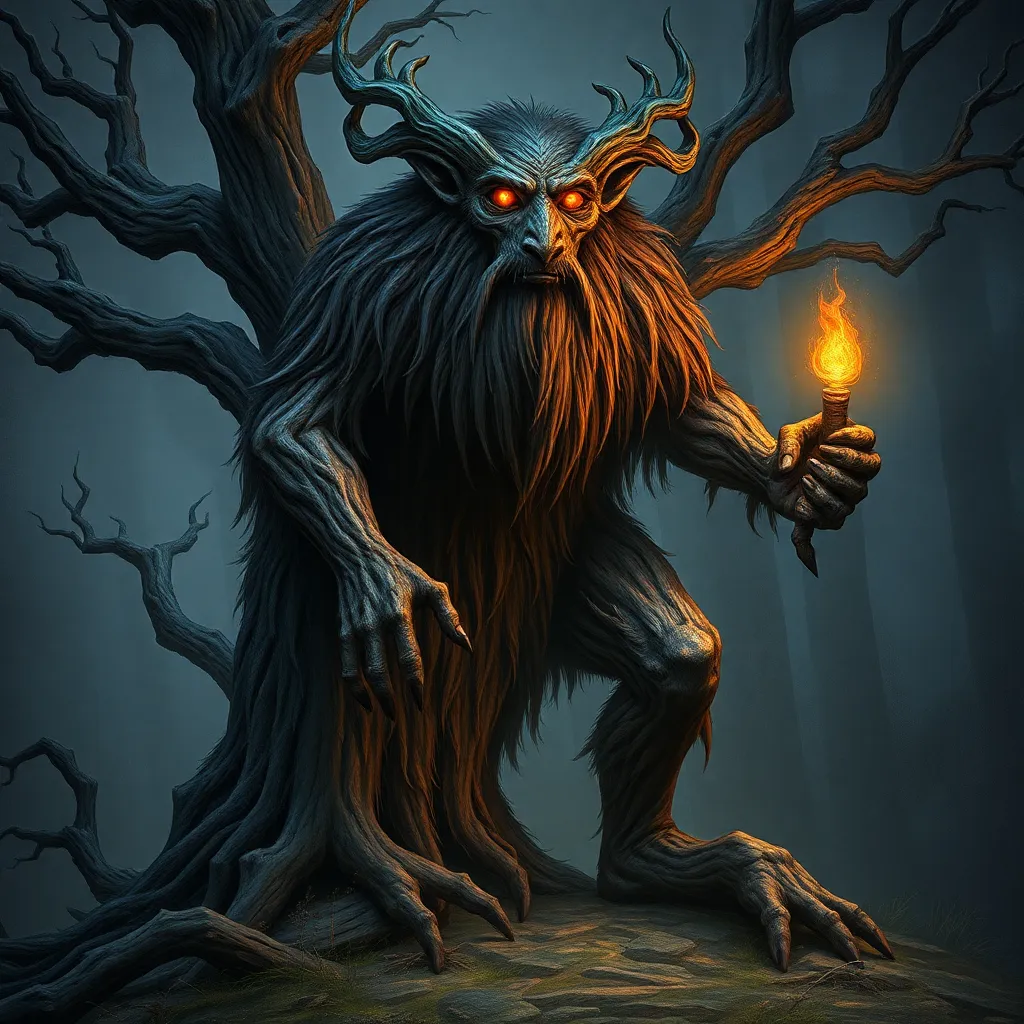The Woodwose: Medieval English Lore of the Wild Man
I. Introduction to the Woodwose
The Woodwose, often referred to as the “Wild Man of the Woods,” is a captivating figure rooted in medieval English folklore. Defined as a half-man, half-beast creature, the Woodwose embodies the untamed spirit of nature and the wilderness. This article aims to explore the historical context, physical characteristics, literary representations, and modern interpretations of the Woodwose, providing a comprehensive understanding of its significance in folklore.
II. Historical Context of the Woodwose Legend
The origins of the Woodwose legend can be traced back to early European mythology, where wild men were common figures in various cultures. These beings often symbolized a connection to nature, representing humanity’s primal instincts and the allure of the untamed.
Cultural influences from neighboring regions, particularly Celtic and Norse traditions, played a significant role in shaping the Woodwose myth. Celtic tales frequently featured forest spirits and beings akin to the Woodwose, while Norse mythology introduced the concept of the “vildhús,” or wild man, who embodied similar traits of wilderness and ferocity.
III. Physical Characteristics and Symbolism
Descriptions of the Woodwose vary across different artistic and literary works, but common features often include:
- Long, unkempt hair
- Animal-like physicality
- Rugged, natural attire made from leaves and fur
- A wild, sometimes ferocious demeanor
The symbolism associated with the Woodwose is multifaceted. It often represents:
- The duality of human nature and wildness
- A connection to the natural world
- The fears and fascinations surrounding the wilderness
- A critique of civilization and the loss of primal instincts
IV. The Woodwose in Medieval Literature
Throughout medieval literature, the Woodwose appears in several key works, including:
- The “Gawain Poet” works, where wild men symbolize trials and challenges
- Various Arthurian legends, often representing the wilderness outside the realm of knights
- Chaucer’s “The Canterbury Tales,” which includes references to wild men in tales of morality and nature
The portrayal of the Woodwose in these texts often reflects societal attitudes toward nature and humanity. While some depictions emphasize the Woodwose’s savagery, others highlight its wisdom and connection to the earth, showcasing a complex relationship with the natural world.
V. The Woodwose in Art and Iconography
The Woodwose has been a prominent figure in medieval art, appearing in manuscripts, tapestries, and sculptures. Artistic representations often depict the Woodwose in the following contexts:
- As a companion to knights on quests, symbolizing the wild challenges they face
- In the margins of illuminated manuscripts, often engaging with animals or nature
- In heraldry, where the Woodwose serves as a symbol of strength, wilderness, and bravery
These representations reflect the cultural significance of the Woodwose as a symbol of both fear and reverence for the natural world.
VI. The Woodwose and Environmental Themes
The relationship between the Woodwose and the natural world is profound. Often seen as a protector of the forest, the Woodwose embodies the spirit of the wilderness. This relationship reveals much about societal attitudes toward nature during the medieval period:
- The Woodwose is a reminder of humanity’s connection to the earth and the importance of preserving natural spaces.
- It reflects the fear of the unknown and the dangers associated with untamed environments.
- As a symbol of wildness, the Woodwose challenges the constraints of civilization and the loss of primal instincts.
VII. Modern Interpretations and Cultural Legacy
In contemporary culture, the Woodwose continues to inspire various forms of media, including literature, film, and art. Some examples include:
- Fantasy novels that reinterpret the Woodwose as a heroic figure or a tragic character.
- Films that explore themes of wilderness and the clash between humanity and nature.
- Artistic works that celebrate the Woodwose as a symbol of environmentalism and a call to reconnect with nature.
The relevance of the Woodwose in today’s discussions of environmentalism reflects a growing awareness of the importance of preserving nature and understanding our relationship with the wild.
VIII. Conclusion
In summary, the Woodwose represents a complex interplay of humanity, nature, and folklore. Its origins in early European mythology, rich symbolism, and diverse representations in literature and art highlight its significance in medieval culture. Furthermore, the Woodwose’s enduring legacy in modern interpretations underscores the importance of reconnecting with nature and understanding our primal instincts. As we navigate the challenges of contemporary life, the Woodwose serves as a reminder of the wildness within us and the beauty of the natural world.




